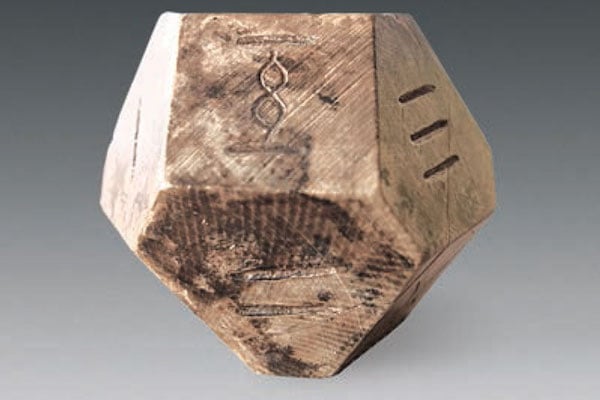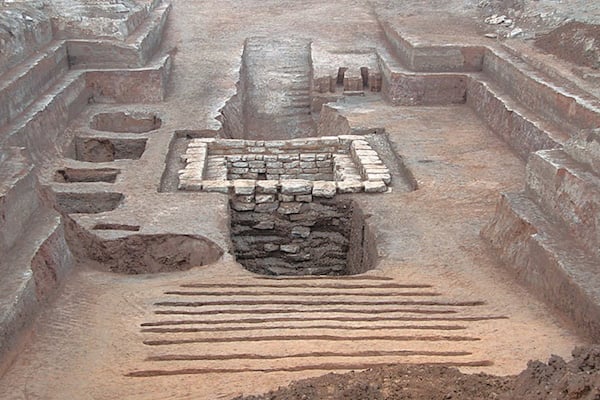Art World
Mysterious Ancient Board Game Discovered in 2,300-Year-Old Tomb in China
No one knows the rules of the enigmatic and ancient game of "Bo."

Photo: Chinese Cultural Relics via Live Science.
No one knows the rules of the enigmatic and ancient game of "Bo."

Lorena Muñoz-Alonso

A group of archaeologists in China have unearthed pieces from a mysterious ancient board game that was last played around 1,500 years ago.
A 14-face die made of animal tooth, 21 rectangular game pieces with numbers painted on them, and a broken tile from a board game were found in a 2,300-year-old tomb in Qingzhou City, according to Live Science.
Other recent archaeological discoveries include a cave full of game pieces that has been dubbed North America’s first casino, and an ancient tablet that has been compared to an iPad.
When reconstructed, the tile turned out to be “decorated with two eyes, which are surrounded by cloud-and-thunder patterns,” a report published in the journal Chinese Cultural Relics claimed. The die comprises the numbers 1 through 6, each appearing twice on 12 of the faces in a form of ancient Chinese writing known as “seal script.” Two of the faces were left blank.
The pieces are thought to be from the ancient board game “Bo” (also called “Liu Bo”), of which not much is known. According to experts, the last record of the game being played dates back 1,500 years, and the rules remain shrouded in mystery.
A 2,200-year-old poem, however, has provided researchers with some hints. “Then, with bamboo dice and ivory pieces, the game of Liu Bo is begun; sides are taken; they advance together; keenly they threaten each other,” reads the poem.

The 2,300-year-old tomb features two ramps leading to the burial chamber.
Photo: Chinese Cultural Relics via Live Science.
While digging the tomb, the archaeologists discovered that it had been heavily looted. In fact, a skeleton, thought to belong to one of the ancient looters, was also found in one of the 26 shafts located in the tomb.
“Despite the huge scale of the tomb, it has been thoroughly robbed,” the archaeologists wrote in Chinese Cultural Relics. “The coffin chamber was almost completely dug out and robbed, suffering severe damage in the process.”